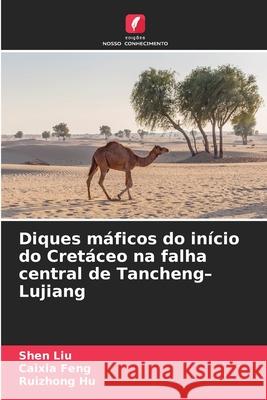topmenu
Wyniki wyszukiwania:
wyszukanych pozycji: 6
 |
Dykes mafiques du Crétacé inférieur dans la faille centrale de Tancheng-Lujiang
ISBN: 9786209079450 / Francuski / Miękka / 2025 / 80 str. Termin realizacji zamówienia: ok. 10-14 dni roboczych (Dostawa w 2026 r.) En tant que résultats particuliers dans un contexte d'extension, les dykes mafiques comprennent des lamprophyres, des dolérites et des porphyrites diabasiques. Il est généralement admis que la destruction mésozoïque s'est produite dans le craton de Chine du Nord, et des recherches à grande échelle ont été menées à ce sujet, mais des controverses sur l'âge, l'espace, le mécanisme et les facteurs contraires apparaissent en raison de recherches mineures sur les roches dérivées du manteau. En tant que faille importante du craton de Chine du Nord, les dykes mafiques mésozoïques...
En tant que résultats particuliers dans un contexte d'extension, les dykes mafiques comprennent des lamprophyres, des dolérites et des porphyrites d...
|
cena:
178,89 |
 |
Magmatische Gänge aus der frühen Kreidezeit im zentralen Teil der Tancheng-Lujiang-Verwerfung
ISBN: 9786209033384 / Niemiecki / Miękka / 2025 / 80 str. Termin realizacji zamówienia: ok. 10-14 dni roboczych (Dostawa w 2026 r.) Als besondere Ergebnisse in extensionalen Umgebungen umfassen die mafischen Gänge Lamprophyre, Dolerite und Diabas-Porphyre. Es ist allgemein anerkannt, dass es im nordchinesischen Kraton zu einer mesozoischen Zerstörung kam. Gleichzeitig wurden groß angelegte Untersuchungen dazu durchgeführt, jedoch gibt es aufgrund der geringen Erforschung der aus dem Mantel stammenden Gesteine Kontroversen hinsichtlich des Alters, des Raums, des Mechanismus und der Gegenfaktoren. Als eine wichtige Verwerfung im nordchinesischen Kraton sind mesozoische mafische Gänge in der Tancheng-Lujiang-Verwerfung...
Als besondere Ergebnisse in extensionalen Umgebungen umfassen die mafischen Gänge Lamprophyre, Dolerite und Diabas-Porphyre. Es ist allgemein anerkan...
|
cena:
178,89 |
 |
Wczesnokredowe dyki magmowe w centralnej czesci uskoku Tancheng-Lujiang
ISBN: 9786209074332 / Polski / Miękka / 2025 / 80 str. Termin realizacji zamówienia: ok. 10-14 dni roboczych (Dostawa w 2026 r.) |
cena:
178,89 |
 |
Diques máficos do início do Cretáceo na falha central de Tancheng-Lujiang
ISBN: 9786209071775 / Portugalski / Miękka / 2025 / 76 str. Termin realizacji zamówienia: ok. 10-14 dni roboczych (Dostawa w 2026 r.) |
cena:
178,89 |
 |
Dighe mafiche del Cretaceo inferiore nella faglia centrale Tancheng-Lujiang
ISBN: 9786209076893 / Włoski / Miękka / 2025 / 76 str. Termin realizacji zamówienia: ok. 10-14 dni roboczych (Dostawa w 2026 r.) |
cena:
178,89 |
 |
Ordovician mafic dykes from Qinling Orogenic Belt, China
ISBN: 9783659369452 / Angielski / Miękka / 2015 / 60 str. Termin realizacji zamówienia: ok. 10-14 dni roboczych (Dostawa w 2026 r.) The Qinling Orogenic Belt is located in the central of China and distributes in east-west direction, there are large-scale igneous rocks within this belt, and they are very important record for orogenesis. The investigation on the feature of the source and origin is critical for understanding the composition of lower crust in orogenic belt, dynamic process in depth of orogenesis, and crust-mantle interaction during orogenic process. Nonetheless, the studies of the igneous rocks are mainly focused on the intermediate and acid intrusions, minor investigation on the mafic dykes though they can...
The Qinling Orogenic Belt is located in the central of China and distributes in east-west direction, there are large-scale igneous rocks within this b...
|
cena:
178,89 |










